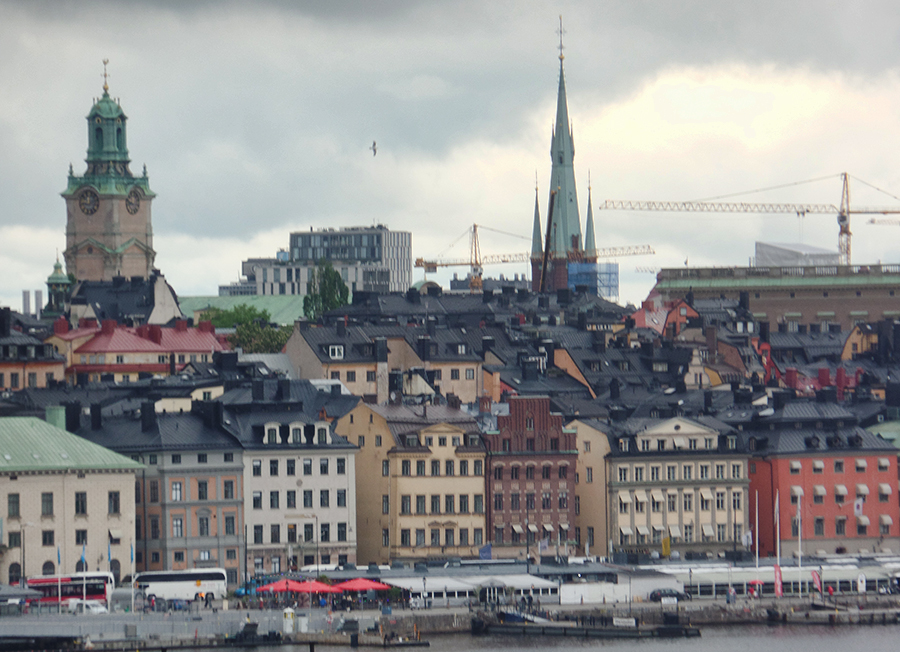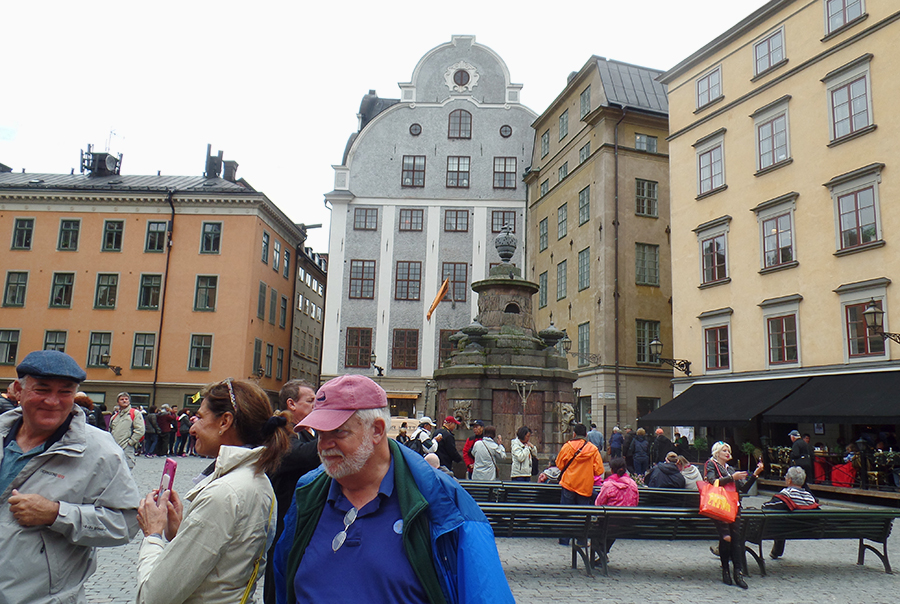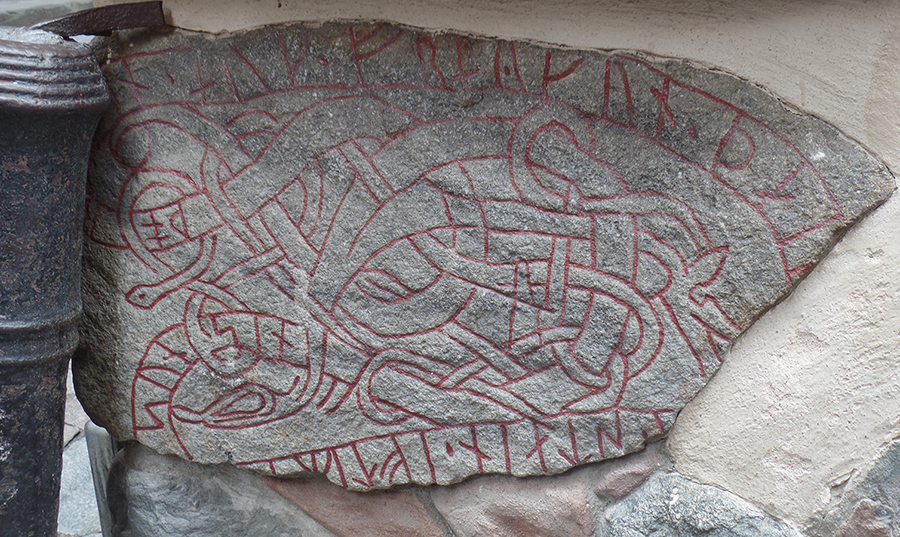It was interesting to learn that the Nobel prizes for all categories except the Peace prize are awarded in Stockholm while the Peace Prize is awarded in Oslo. The only explanation given by our guide for this separation was the fact that the prizes were first awarded in 1901 and Norway independence did not occur until 1905. To my curious mind that was not a good explanation. But then the guide said that the people of Stockholm were just as happy to leave the Peace Prize in Oslo as it creates all the controversy and is very expensive to host. This rang true to some extent in that our guide in Oslo had said it cost Norway $10 million to host the award the year President Barak Obama was given the award.
But apart from the Nobel Foundation and Museum, whose offices are on the square in the Stockholm old town, the city has much to offer. I found the architecture to be an interesting blend of German practicality and Dutch flair. The Old Town is small, most of the shops are likewise small and bathrooms tend to be in the basement. We were in search of a Fika, which is a cinnamon roll with crystal sugar on top that Swedes love to consume with a cup of coffee as a snack nearly every day. It seemed that every shop on the square served Fika, which could also include other pastries or a light snack, as well as the traditional carved wooden horses. Of course we consumed our Fika and bought horses for all the special people we bring back presents to from our many trips.

The major attractions include the VASA museum, which is an almost perfectly preserved more than 300 years old man of war sailing ship which capsized in the Stockholm harbor on its first voyage. Many of the folks traveling with us took in the ABBA museum since all had seen Mama Mia either as a play or the movie with Meryl Streep and Pierce Brosnan. Most also remembered the songs, so you know not many were still in their teens. Stockholm has the usual Royal Palace, Parliament and government buildings in this same area. Most were multiple hundred years old and sat on sites where predecessor buildings also sat for multiple hundreds of years.
The night life in Stockholm is rumored to be excellent although I can’t attest to it personally as I had to depart immediately after our tour to catch a flight back across the pond. The city features an interesting outdoor museum with more than sixty preserved structures. At certain times the people there will dress in period costumes so a visitor could get a sense of what it was like to live in Stockholm during the periods from which the structures originated.

The key question we were not able to answer from our visit was why everyone in the region saw the Swedes as the enemy. Their armies and navies conquered most of the other countries in the region multiple times over the middle ages and later. At least twice the Swedes dominated their neighbors in forced alliances. This is best represented by the fact that in major portions of Finland both Finnish and Swedish are official languages. Our guide in Sweden estimated that approximately 25% of all Finns have Swedish as their primary language. This was validated in that Swedish was the primary language for one of our hosts at one of the places we visited in Finland. The only explanation that seems to make sense is that since the Vikings were primarily Swedish their fierce nature persisted long after the Vikings themselves disappeared into the annals of history.






No Comments